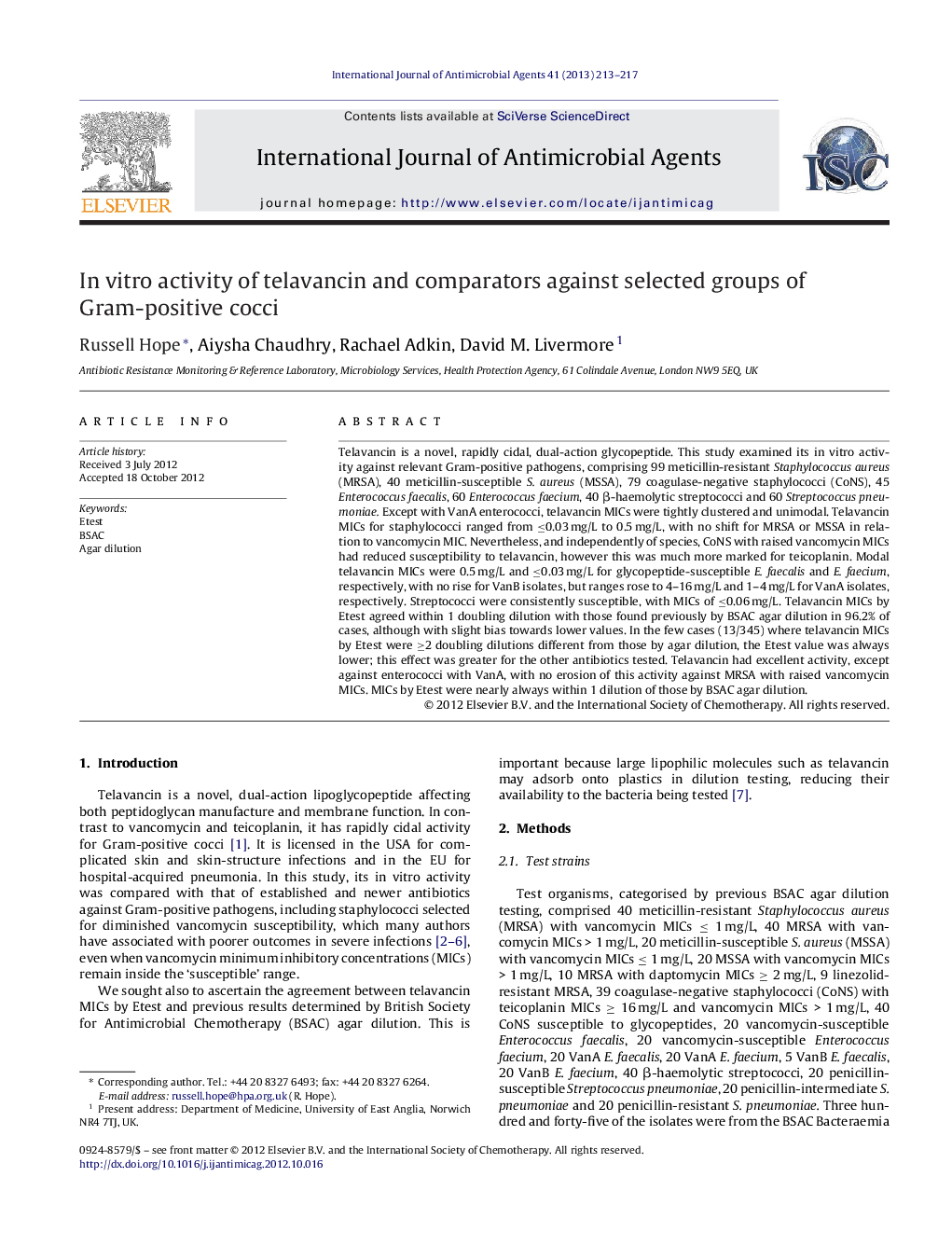| Article ID | Journal | Published Year | Pages | File Type |
|---|---|---|---|---|
| 3359231 | International Journal of Antimicrobial Agents | 2013 | 5 Pages |
Telavancin is a novel, rapidly cidal, dual-action glycopeptide. This study examined its in vitro activity against relevant Gram-positive pathogens, comprising 99 meticillin-resistant Staphylococcus aureus (MRSA), 40 meticillin-susceptible S. aureus (MSSA), 79 coagulase-negative staphylococci (CoNS), 45 Enterococcus faecalis, 60 Enterococcus faecium, 40 β-haemolytic streptococci and 60 Streptococcus pneumoniae. Except with VanA enterococci, telavancin MICs were tightly clustered and unimodal. Telavancin MICs for staphylococci ranged from ≤0.03 mg/L to 0.5 mg/L, with no shift for MRSA or MSSA in relation to vancomycin MIC. Nevertheless, and independently of species, CoNS with raised vancomycin MICs had reduced susceptibility to telavancin, however this was much more marked for teicoplanin. Modal telavancin MICs were 0.5 mg/L and ≤0.03 mg/L for glycopeptide-susceptible E. faecalis and E. faecium, respectively, with no rise for VanB isolates, but ranges rose to 4–16 mg/L and 1–4 mg/L for VanA isolates, respectively. Streptococci were consistently susceptible, with MICs of ≤0.06 mg/L. Telavancin MICs by Etest agreed within 1 doubling dilution with those found previously by BSAC agar dilution in 96.2% of cases, although with slight bias towards lower values. In the few cases (13/345) where telavancin MICs by Etest were ≥2 doubling dilutions different from those by agar dilution, the Etest value was always lower; this effect was greater for the other antibiotics tested. Telavancin had excellent activity, except against enterococci with VanA, with no erosion of this activity against MRSA with raised vancomycin MICs. MICs by Etest were nearly always within 1 dilution of those by BSAC agar dilution.
